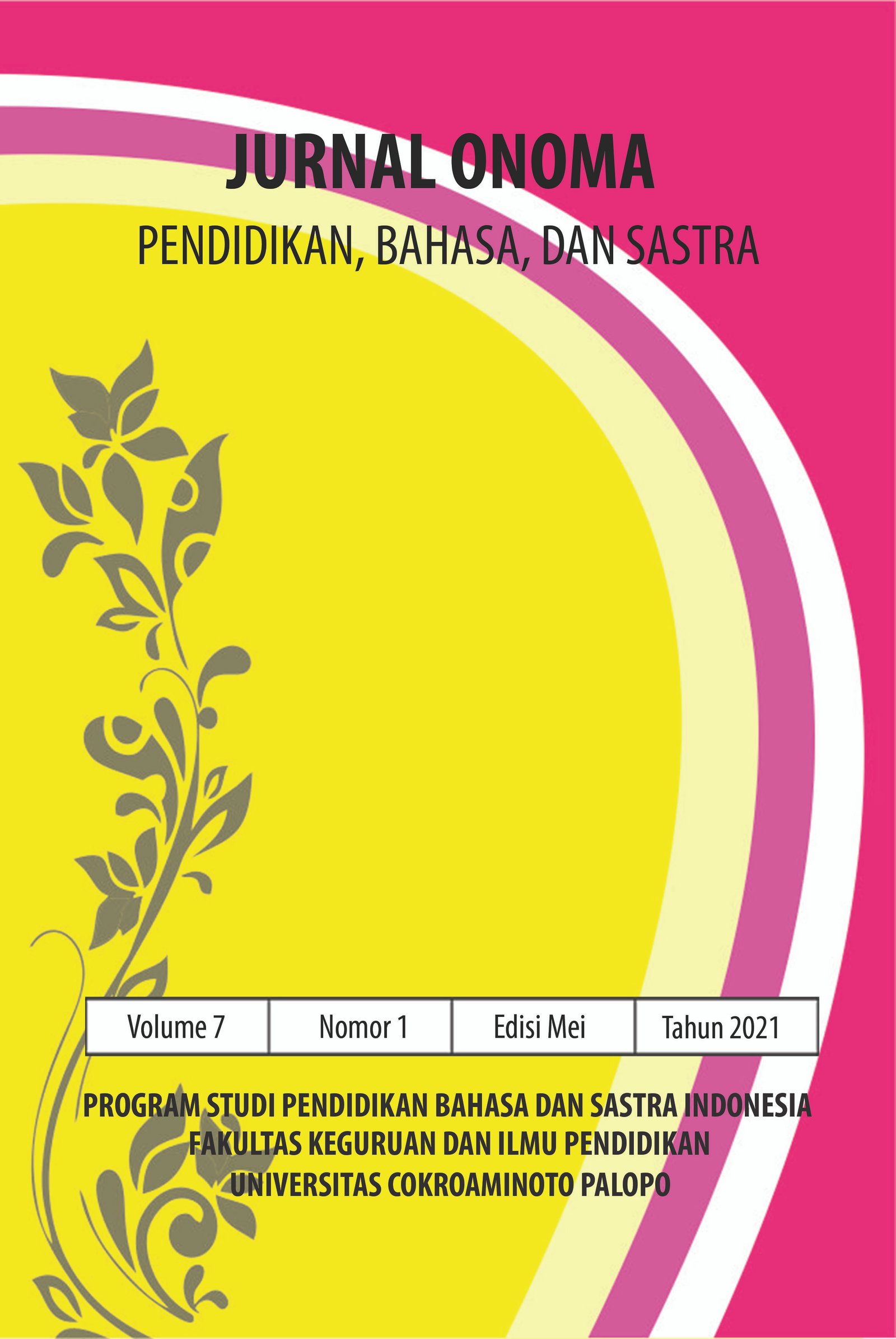An Analysis of Teachers Questioning Strategy at the Computer Engineering Class of SMKN 7 Luwu Utara
https://doi.org/10.30605/onoma.v7i1.1184
Keywords:
English Teachers’ question and Questioning strategy.Abstract
The objective of this research is to find out the teachers’ questioning strategy in teaching English at SMKN 7 Luwu Utara. The method that was applied in this research is a descriptive qualitative method. There were 2 English teachers as the sample of this research. Data collection of this research through interview and questionnaire. The result of data analysis showed that the teachers used questioning strategies by applying some types of question in each sessions of teaching. During the interview the researcher found that the first teacher only used a probing question and divergent question, while the second teacher only used a higher order question. So, from the whole between the first teacher and the second teacher after the researcher analyzed from the interview and questionnaire, the researcher found that the questioning strategies used by the teacher were probing questions, divergent questions and higher order questions. As for the strategy question that often appears or is often used by teachers, namely the probing question strategy.
Downloads
References
Adler, Mortimer, (1982). The paideia proposal: An educational manifesto. NewYork: MacMillan
Alhojailan and Ibrahim, Mohammed. 2012. A Critical Review of Its process and Evaluation. Kingsaud University. Saudi Arabia.
Blosser, P. E (1973). Handbook of effective questioning techniques. Worthington, OH: Education Associates.
Debra,S.P., & Barbara, M.T. (2012). Using Higher Order Questioning to Accelerate Students' Growth in Reading. The Reading Teacher Journal. Vol.65 (5).
Faculty, T. H. E., Education, O. F., & Training, T. (2017). Teacher Questioning Strategies : To Improve Students ’ Motivation in English Classroom Learning Activity.
Farmer, L. S. J. (2006). Question as Communication Process.Library, 1–12.
Gay, L. R. 1981. Educational Research: Competencies for Analysis and Application: 2nd Edition. London: Charles E. Merill.
Guest, (1985,P.2). The case study method: Critical thinking enhanced by effective teacher questioning skills. The 18th Annual International Conference of the World Association for Case MethodResearch & Application.
Harvey, (2000) Teaching Comprehention to Enhance Understanding.
H.DouglasBrown.(2000)[H._Douglas_Brown]_Teaching_by_Principles,_Second_(BookFi.org).pdf. In Teaching by Principles An Interactive Approach to Language Pedagogy (p. 491).
Hunkin, F. (1976). Involving Students in questioning, Boston : Allyn and Bacon.
Jacobsen, D.,A. at al. (1980). Methods for teaching. New Jersey: Prentice Hall.
Jessica Fries-Gaither (2008) Questioning Tecniques: Research-Based Strategies Teachers. Retrieved on 04 february 2009.
K, G. (2002). A Look at Productive Tutoring Techniques Users Guide.
Monitoring Student Learning in The Classroom. (1988).
Long, M. H. and Sato, C.J. (1983) Classroom Foreign Talk Discourse : Forms and Function of Teacher's Questions. TESOL Quarterly. 15.
Lynch, T (1991). Questioning Roles in the Classroom. ELT Journal. 45 (3).
Prabowo, A, B. alfiyanti. (2013). An Analysis of Teachers Questioning Strategis During Interaction In The Classroom.
Ramadhana, M. A., & Allo, D. K. (2021). Experimental Research in English Language Teaching: A Peek from Undergraduate Students’ Theses. Jurnal Studi Guru Dan Pembelajaran, 4(1), 32-38. https://doi.org/10.30605/jsgp.4.1.2021.474
Riskah. 2019. Improving Students' Vocabulary through Simon Says Game at the Seventh Grade of SMP Negeri 2 Palopo. Unpublish thesis. Palopo: Faculty of Teacher Training and Education - Cokroaminoto Palopo University.
Rosyidah, K. (2018). An Analysis of Teacher ’ S Questions Used in Classroom Interaction at 11 Th Grade Of Smk Ma ’ Arif Nu.
Wade, M. 2006. Likert-Types Scale Response Anchors. Clemson Institute for Tourism & Research Development, Department of Parks, Recreation and Tourism Management. Unpublish Thesis. Clemson University.
Downloads
Published
How to Cite
Issue
Section
License
In submitting the manuscript to the journal, the authors certify that:
- They are authorized by their co-authors to enter into these arrangements.
- The work described has not been formally published before, except in the form of an abstract or as part of a published lecture, review, thesis, or overlay journal.
- That it is not under consideration for publication elsewhere,
- That its publication has been approved by all the author(s) and by the responsible authorities – tacitly or explicitly – of the institutes where the work has been carried out.
- They secure the right to reproduce any material that has already been published or copyrighted elsewhere.
- They agree to the following license and copyright agreement.
License and Copyright Agreement
Authors who publish with Onoma Journal: Education, Languages??, and Literature agree to the following terms:
- Authors retain copyright and grant the journal right of first publication with the work simultaneously licensed under Creative Commons Attribution License (CC BY 4.0) that allows others to share the work with an acknowledgment of the work's authorship and initial publication in this journal.
- Authors are able to enter into separate, additional contractual arrangements for the non-exclusive distribution of the journal's published version of the work (e.g., post it to an institutional repository or publish it in a book), with an acknowledgment of its initial publication in this journal.
- Authors are permitted and encouraged to post their work online (e.g., in institutional repositories or on their website) prior to and during the submission process, as it can lead to productive exchanges, as well as earlier and greater citation of published work.

















